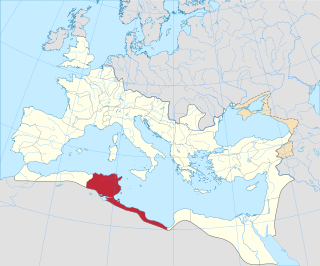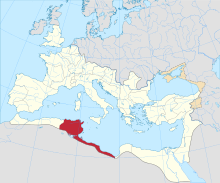Aprus or Apros, also Apri or Aproi (Ἄπροι), was a town of ancient Thrace and, later, a Roman city established in the Roman province of Europa.
A titular see in various churches is an episcopal see of a former diocese that no longer functions, sometimes called a "dead diocese". The ordinary or hierarch of such a see may be styled a "titular metropolitan", "titular archbishop" or "titular bishop", which normally goes by the status conferred on the titular see.
An auxiliary bishop is a bishop assigned to assist the diocesan bishop in meeting the pastoral and administrative needs of the diocese. Auxiliary bishops can also be titular bishops of sees that no longer exist as territorial jurisdictions.

The Roman Catholic Diocese of Beverley is an historical diocese of the Roman Catholic Church in England. It took its name after St John of Beverley, 8th century bishop of York. The episcopal see was located in the city of York. The diocese was established in 1850 and was replaced by the dioceses of Leeds and Middlesbrough in 1878. It was restored as a titular see in 1969.

In the Catholic Church, a bishop is an ordained minister who holds the fullness of the sacrament of holy orders and is responsible for teaching doctrine, governing Catholics in his jurisdiction, sanctifying the world and representing the Church. Catholics trace the origins of the office of bishop to the apostles, who it is believed were endowed with a special charism and office by the Holy Spirit at Pentecost. Catholics believe this special charism and office has been transmitted through an unbroken succession of bishops by the laying on of hands in the sacrament of holy orders.

The Diocese of Taiohae is a Latin Church ecclesiastical jurisdiction or diocese of the Catholic Church in French Polynesia. It is a suffragan diocese in the ecclesiastical province of the Archdiocese of Papeete, yet still depends on the missionary Roman Congregation for the Evangelization of Peoples.
The Roman Catholic Diocese of Khulna is a Latin suffragan diocese in the ecclesiastical province of Chittagong, one of two provinces in Bangladesh. However it remains dependent on the missionary Roman Congregation for the Evangelization of Peoples.
Thomas Lawrence Noa was an American prelate of the Roman Catholic Church. He served as bishop of the Diocese of Marquette in Michigan from 1947 to 1968. He previously served as coadjutor bishop of the Diocese of Sioux Falls in Iowa from 1946 to 1947.

Amourah, or Amoura is a town and Latin Catholic titular bishopric in Algeria.
The Roman Catholic Diocese of Suacia was a bishopric with see in the town of Svač, which is today the village lying to the east of Ulcinj in Montenegro that is called in Serbian Шас, in Croat Šas and in Albanian Shas.
The Diocese of Castro di Sardegna was a Roman Catholic diocese located in the town of Oschiri in the Province of Sassari in the Italian region of Sardinia. In 1503, it was suppressed along with the Diocese of Bisarcio and the Diocese of Ottana to form the Diocese of Alghero.
The Diocese of Vulturara e Montecorvino was a Roman Catholic diocese located in the city of Volturara Appula in the province of Foggia in the Apulia region of southeast Italy. The bishopric, which already existed in the 10th century, was united with that of Diocese of Montecorvino in 1433. Giuseppe Cappelletti gives detailed information about most of its bishops. In 1818, as part of a reorganization of the dioceses within the Kingdom of the Two Sicilies, the diocese ceased to exist as a residential see and its territory became part of the diocese of Lucera. It is now included in the Catholic Church's list of titular sees.
The Diocese of Vico Equense was a Roman Catholic diocese located in the coastal town of Vico Equense in the Metropolitan City of Naples, in Italy. It was suppressed in 1818 to the Archdiocese of Sorrento. It is now included in the Catholic Church's list of titular sees.
The Diocese of Termia or Diocese of Thermae or Diocese of Thermia was a Latin Catholic crusader bishopric located in the Cyclades archipelago in the Aegean Sea. It was originally established as the Diocese of Ceo in 1330, before being renamed in 1600. The diocese was reestablished as a titular see in 1933 under the name Titular Episcopal See of Cea.
The Diocese of Chiron or Diocese of Chersonissos was a Roman Catholic diocese located in the town of Chersonissos in the north of Crete, bordering the Aegean Sea. In 1787, it was suppressed and became a Titular Episcopal See.
The Diocese of Fondi or Diocese of Fundi was a Roman Catholic diocese located in the town of Fondi in the province of Latina, Lazio, central Italy. In 1818, it was suppressed to the Diocese of Gaeta. It was restored as a Titular Episcopal See in 1968.

Ksour-El-Khaoua is a locality in southern Tunisia, North Africa. During the Roman Empire the town was a civitas (town) in the Roman province of Byzacena. and the seat of an ancient Christian bishopric.

Bapara, Mauritania, was an Ancient city and former bishopric, now a Latin Catholic titular see.

Flenucleta was an ancient Berber, Roman and Byzantine civitas located in the Mediterranean hinterland of what was then the province of Mauretania Caesariensis. It was situated in present-day northern Algeria. The exact location of the city is unknown.






